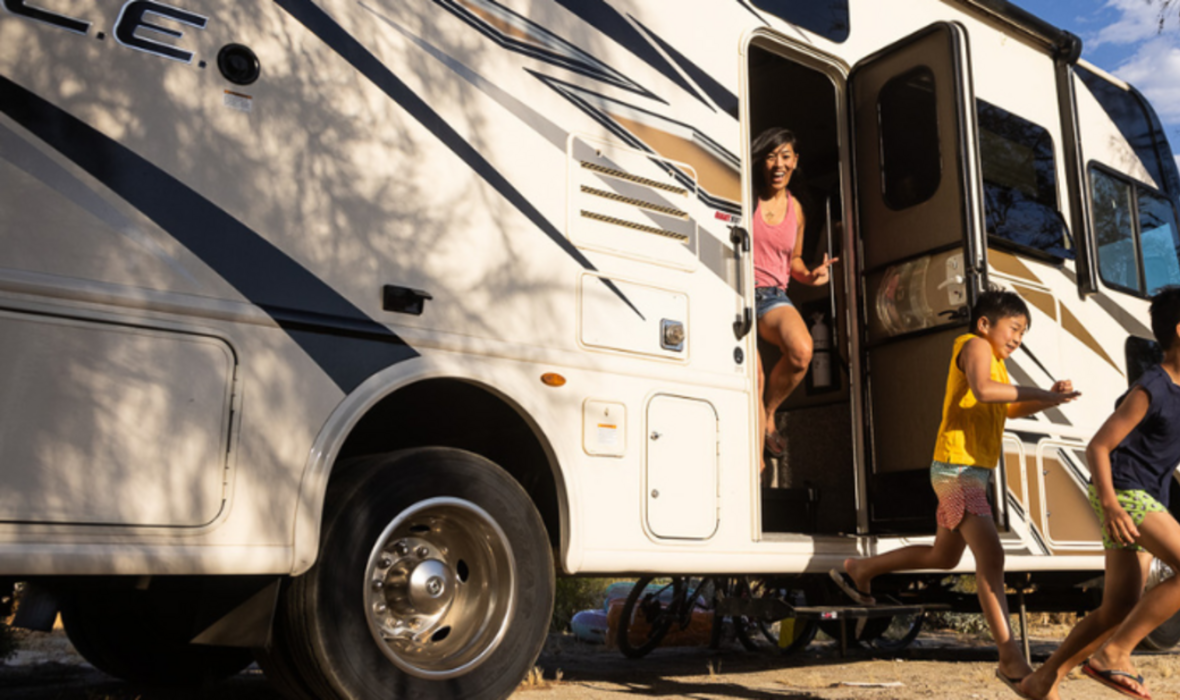Emptying your RV’s black and grey tanks is a necessary part of RVing, and knowing how to do it properly will help keep your rig clean, odor-free, and functioning smoothly. While it may seem intimidating at first, following some simple steps and using the right products can make the process efficient and hassle-free
Step 1: Gather Your Essential Equipment
Before you begin, make sure you have the right tools and protective gear. Handling wastewater requires caution, so investing in proper sanitation equipment is crucial. Here are some must-have products:
Recommended Products:
- Camco RhinoFLEX 20-Foot RV Sewer Hose Kit – A durable, flexible sewer hose that ensures a secure and mess-free connection.
- Thetford Titan Premium RV Sewer Hose Kit – Heavy-duty hose with superior puncture resistance and extended durability.
- Lippert Waste Master Sewer Hose – Features a permanently attached nozzle and an easy-grip handle for effortless operation.
- Camco Heavy-Duty RV Sanitation Gloves – Thick, reusable gloves designed to protect your hands from bacteria and contaminants.
- Camco Rhino Blaster Pro Tank Rinser – Connects to your black tank to provide a high-pressure rinse and prevent buildup.
Having these items on hand will make the process much more manageable and help keep your RV’s waste system in top shape.
Step 2: Connect Your Sewer Hose
Set Up Your Equipment
- Park your RV close to the sewer hookup at your campsite or dump station.
- Put on your sanitation gloves to avoid direct contact with waste and contaminants.
- Attach your sewer hose securely to the RV’s waste outlet, ensuring a tight, leak-proof connection.
- Place the other end of the hose securely into the dump station opening, using a sewer hose support to keep it elevated and properly angled.
Step 3: Empty the Black Tank First
Why Empty the Black Tank First?
The black tank contains human waste from your RV’s toilet. It should always be emptied before the grey tank so that the soapy water from sinks and showers can help rinse the sewer hose afterward.
How to Empty the Black Tank:
- Ensure your sewer hose connections are secure before opening any valves.
- Slowly pull the black tank valve to release the waste. You’ll hear the contents rushing through the hose.
- Allow the tank to completely drain before moving on to the next step.
- If your RV has a black tank flush system, use it now (more on this in the next section).
- Close the black tank valve once draining is complete.
Step 4: Use the Black Tank Flush Feature if Available
What is a Black Tank Flush?
Many new RVs come equipped with a black tank flush system, which is an external water inlet that allows you to spray clean water inside the tank to remove waste buildup.
How to Use It Properly:
- Connect a dedicated flush hose (never use your fresh water hose) to the black tank flush inlet.
- A great option is the Camco 25-Foot RhinoFLEX Cleanout Hose, which is designed specifically for flushing tasks.
- Turn on the water supply and let it run for several minutes, ensuring all waste is removed from inside the tank.
- Monitor your tank’s sensor levels and continue flushing until the water runs clear.
- Disconnect the flush hose and store it separately from your drinking water hose.
Using a black tank flush regularly helps prevent odor, buildup, and clogs, ensuring your system remains in top condition.
Step 5: Empty the Grey Tank
Once the black tank is empty and flushed, you can now empty the grey tank. Since this tank contains soapy water from sinks and showers, it helps to rinse out the sewer hose, leaving it cleaner than if you had emptied the black tank alone.
How to Empty the Grey Tank:
- Slowly pull the grey tank valve and allow the wastewater to drain completely.
- Watch for any slow drainage, as this could indicate grease buildup. If necessary, use a grey tank treatment to help break down soap scum and residue.
- Once drained, close the grey tank valve securely.
Step 6: Clean and Store Your Equipment
- If your RV has a built-in sewer hose rinse system, use it now to flush out any remaining debris.
- If not, use a separate water hose to rinse the sewer hose manually before disconnecting.
- Carefully disconnect your sewer hose and store it in a designated compartment to avoid contamination.
- Sanitize your gloves and hands with disinfectant wipes or soap and water
Additional Tips for Maintaining Your RV Tanks
- Use RV-Safe Toilet Paper: Regular toilet paper can cause clogs. Opt for biodegradable options like Thetford Aqua-Soft Toilet Tissue.
- Use Tank Treatments: Add a holding tank treatment, such as Thetford Aqua-Kem, to help break down waste and control odors.
- Regularly Inspect and Maintain Valves and Seals: Check for leaks, cracks, or worn-out seals to prevent messy issues.
- Flush Tanks Regularly: Even if you’re not on the road, flushing your tanks periodically helps prevent residue buildup.
Emptying your RV’s black and grey tanks doesn’t have to be a daunting task. With the right approach, proper safety measures, and essential gear you can keep your waste system running smoothly and odor-free. By following these steps and maintaining your tanks properly, you’ll ensure a cleaner, more enjoyable RVing experience on every trip.











